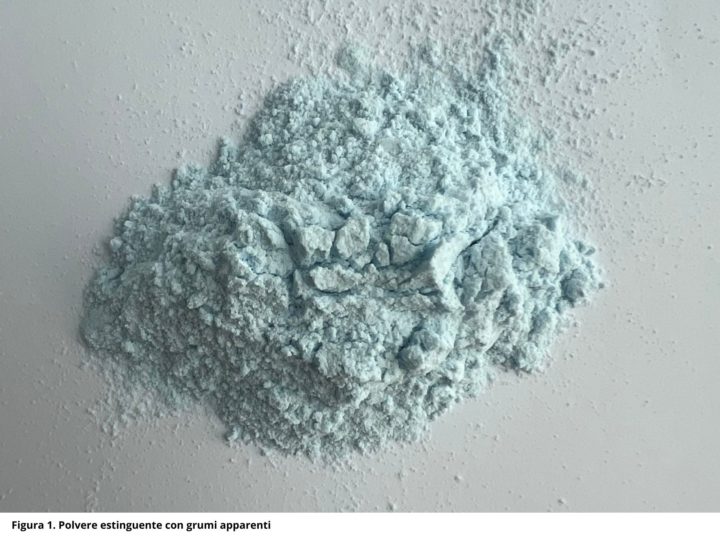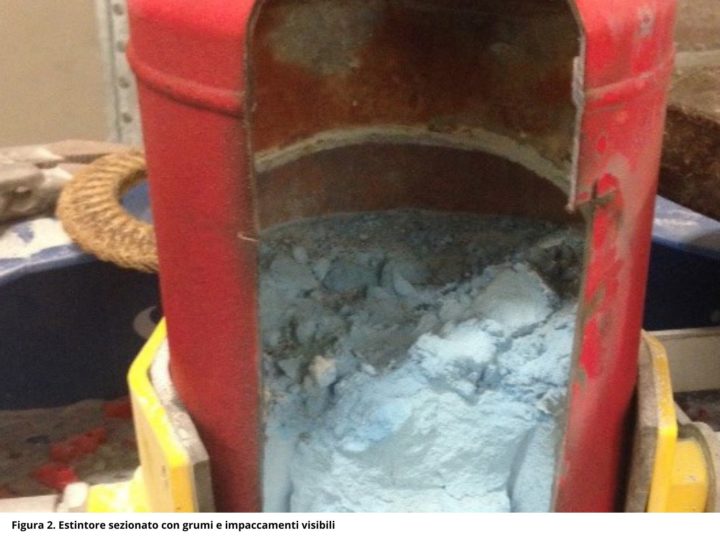Extinguishing powder: let’s discuss about lumps
The presence of lumps and stripes can happen during the lifecycle of the extinguishing powder. Let’s analyse the different types of lumps that can occur, the main causes and the possible consequences.
Lumps formed by storage
A proper powder storage can cause the formation of lumps, which in this case, are false, resulting from the stationing in the storage area without a frequent handling.
Therefore, the extinguishing powder may appear compact or composed of lumps: through a simple powder manipulation or bag movement, it is noticeable that the powder will return to its original powdery state.
Are these lumps dangerous for the powder?
This type of packing does not alter the physico-chemical characteristics requested by the EN 615:2009 Standard. In fact, it does not represent a danger for the powder efficiency on the flames and it does not obstacle the normal powder filling process.
Lumps from chemical reactions
Stripes and a more intense colour in some parts of the product are signals that should be take into consideration. These alterations are imputable to chemical reactions.
This situation does not only affect the physical state of the extinguishing powder, also the proper characteristics, showing thus alteration of the EN 615:2009 values.
Caking phenomenon
Lumps generated from moisture (caking phenomenon) may result from different situations: an improper storage could be the reason of stripes and lumps presence.
Not only a wet environment can cause the caking phenomenon: also, more serious situations, such as a direct contact between water and dry chemical powder (for example, with an open-air storage without any shelter, may occur spills or rain).
In this case, the presence of lumps is visible but also touchable.
Caking phenomenon: is it dangerous for the powder?
The presence of moisture is one of the most dangerous factors for the dry powder nature: the occurrence of lumps compromises the use of the fire extinguisher itself.
Lumps from chemical reaction
The presence of lumps can be the consequence of other chemical reactions: a mixture between ABC and BC dry powders, or the alteration of the silicone additive are some examples.
Chemical reaction: do these lumps spoil the powder?
Of course, the answer is yes. As we have already seen before, the presence of lumps is risky and synonym of properties alteration, thus resulting not compliant with EN 615:2009 standards.



